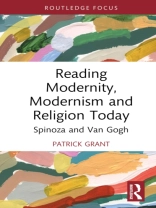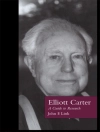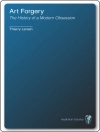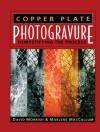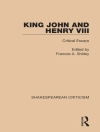Feelings of rootlessness, fragmentation and loneliness are endemic in today’s secular societies. In the late nineteenth century, Emile Durkheim described this kind of social malaise as anomie, a concept this book locates within a historical narrative of the emergence of Modernism from Modernity. The book focuses on two representative figures, Benedictus de Spinoza and Vincent van Gogh, on whose works it offers significant new perspectives. Spinoza drew up a blueprint for Modernity, which is to say, the cultural transformations that took place as a result of the Scientific Revolution and the Protestant Reformation. In counterpoint to his overriding confidence in reason, a persistent current in Spinoza’s writing shows how concerned he was about a possible loss of confidence in his governing idea of a single Substance, the philosophical God, with which he sought to replace the creator God of the Bible. In promoting art as a means of filling the gap left by the absence of Spinoza’s philosophical God and the failures of traditional Christianity, Van Gogh also discovered the limitations of the vocation to which he had dedicated himself. He concluded that in the tension between art and anomie, a new kind of religious sensibility and understanding might emerge. This remains the case in the current postmodern cultural phase when fragmentation and incoherence are summoning up new assessments and re-configurations of values promoting new forms of solidarity, dialogue and religious understanding.
Patrick Grant
Reading Modernity, Modernism and Religion Today [EPUB ebook]
Spinoza and Van Gogh
Reading Modernity, Modernism and Religion Today [EPUB ebook]
Spinoza and Van Gogh
قم بشراء هذا الكتاب الإلكتروني واحصل على كتاب آخر مجانًا!
لغة الإنجليزية ● شكل EPUB ● صفحات 110 ● ISBN 9781040268858 ● الناشر Taylor & Francis ● نشرت 2024 ● للتحميل 3 مرات ● دقة EUR ● هوية شخصية 10008246 ● حماية النسخ Adobe DRM
يتطلب قارئ الكتاب الاليكتروني قادرة DRM
